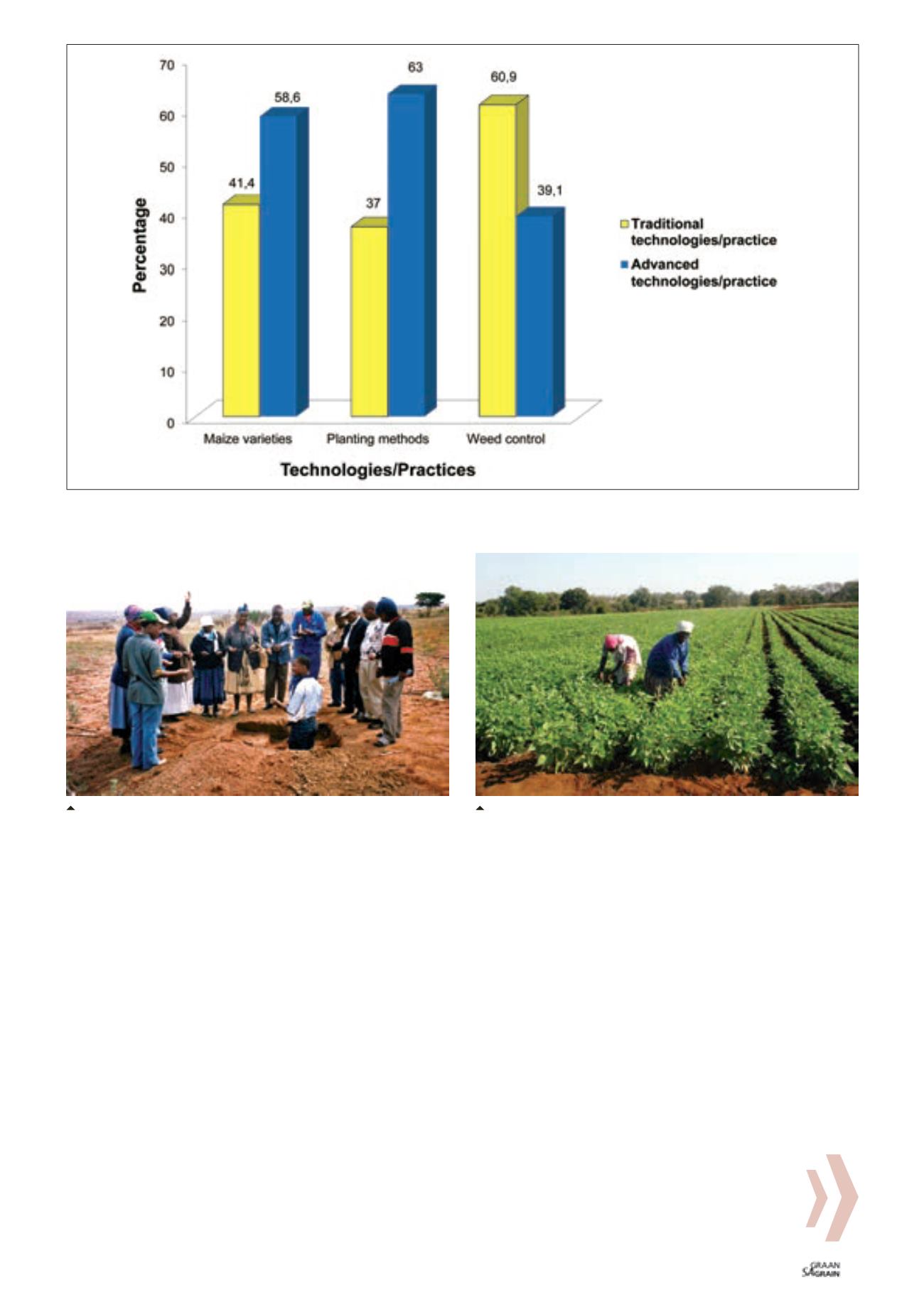
77
May2014
advancement project, resulted in a positive response towards
advancedproductionmethodsbyparticipatingproducers (
Graph1
).
The combination of on-farm experiments and interactive training at
numerousoccasions in theproject,madeasignificant contribution to
convinceproducers of the advantages of someof the technologies.
The superior performance of hybridmaize in comparisonwith local
varieties or open-pollinated varieties clearlymotivated them to opt
for hybrids. In the case of chemical weed control (usually seen as
an advanced form of technology) the purposeful collaboration
with producers in the on-farm evaluation process, resulted in
the experimentation or testing of some herbicides by individual
producers on their own initiative.
According to another investigation on the impact of the same
project, improvedplantingpractices,which imply theuseof planters
instead of the traditional plough furrow method, have increased
by 33%. Before the project, the proportion of producers using
planterswas 55%which increased to 88%by the endof theproject.
Provision of training of quality and
relevance
In view of the limited educational opportunities in the rural South
Africaof thepast, theneed for knowledgeand information isof great
significance.
This provides an enormous opportunity to impact directly on the
lives of producers in many remote areas of South Africa who are
still at the tail-end of technological progress. This opportunity has
recentlybeen thoroughly exploitedby theARC-GCI.
In a comprehensive training programme covering the period
May2013 toMarch2014, a total of 1135producerswere trainedat 41
training events. In this training programme the Institutewas able to
trainproducersonawide rangeof topics relating tomaize, drybean,
groundnut, sunflower and sorghumproduction.
Bridging the gap between the producer,
service providers and agri-businesses
In the past there were two important shortcomings of rural
development strategies. Firstly, there was an overemphasis on
technology as theonlydriver of development andgrowth.
The secondweaknesswas the failure topurposefully link producers
with service providers beyond community boundaries. Producers
might be knowledgeable, skilled and empowered, and have
participated in the development of technologies, but if business
Graph 1: Proportionof producers usingdifferent technologies or practices (n= 46).
1: Helpingproducers to explore, know and nurture their own natural re-
sources.
2: Able implementers of their own crop rotation systemwith dry beans
at Zava irrigation schemenearGiyani inLimpopo.


